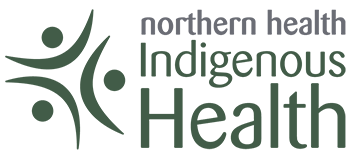The Aboriginal Health team has changed our name to Indigenous Health. We are excited to make this change that reflects evolving contexts and new relationships. Updating our name and all that goes with it will be a big job, so please be patient with us as we begin to make this change.
Over the years, we have seen many changes in terminology related to Indigenous Peoples in Canada. Words are important because they carry meanings and representations of histories and power dynamics.
The term Indigenous was chosen by Indigenous leaders in the 1970s to identify, unite and represent diverse communities in global political arenas. The term Indigenous is a relational word that highlights a peoples’ connection to traditional territories, as well as their experiences of colonization.
In contrast, the term Aboriginal was introduced in the 1982 Canadian Constitution by the Federal Government as an ‘umbrella’ term to include First Nations, Inuit and Métis. Some people dislike the word Aboriginal for this reason and because the prefix ‘ab’ is Latin for “away from” or “not”. Ironically, Aboriginal can be interpreted to mean “not original”. Some people may prefer the term Aboriginal, however, because it is defined and protected within the Constitution.
Both Aboriginal and Indigenous are generally accepted terms in Canada and are inclusive of First Nations, Métis and Inuit. We recognize the value of inclusive terms, however, we also acknowledge that many individuals and communities do not identify with them. As well, collective terms like Aboriginal and Indigenous have the potential to diminish diversity and unique realities of different peoples. For these reasons, we will continue to use specific names such as Tsimshian, Nisga’a, Tahltan, Cree, etc., when possible.
For a brief overview of the evolution of terminology related to Indigenous people, check out this short video by Erica Daniels on Unreserved, CBC.
Northern Health is not alone in making the shift to Indigenous. Many organizations and groups are also making the change. Here are just a few examples:
- In 2015, the federal government re-named the department of Aboriginal and Northern Affairs to Indigenous and Northern Affairs. Some heralded the name change as “more inclusive” and “symbolically important” and a sign the government will address the UN Declaration on the Rights of Indigenous Peoples, which the federal government officially adopted in May 2016. For example, under the UN Declaration on the Rights of Indigenous Peoples, Indigenous Peoples around the world have a legal right to offer or withhold consent to development. By recognizing First Nations, Inuit and Metis as Indigenous Peoples, the federal government is acknowledging this right.
- CBC Aboriginal changed their name to CBC Indigenous, acknowledging that “Indigenous is fast becoming the preferred way to refer to First Nations, Inuit and Métis peoples.”
- In March 2016, the Congress of Aboriginal People changed their name to the Indigenous Peoples’ Assembly of Canada in part because the term is “more inclusive since it identifies peoples in similar circumstances in all countries with a colonial history.”
- The Saskatchewan Indian Cultural Centre changed their name to Indigenous, as did the Federation of Saskatchewan Indian Nations. Many other organizations and education departments are making similar changes to their names.

